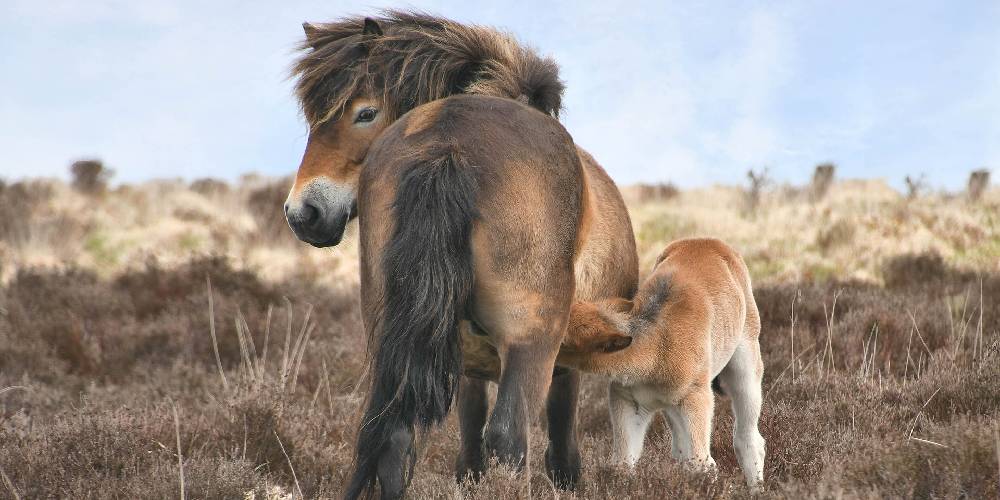I have been asked about the Exmoor pony from the country of England several times now. People want to know not only the basic information about the breed but also other things like the breed’s natural abilities and overall appearance. This is all about the Exmoor pony.
What Is The Exmoor Pony?
The Exmoor Pony is a breed of pony that originated in the British Isles. This pony breed is most popularly used as a children’s riding pony but it can also frequently be seen pulling carts and wagons. This pony breed is known for its bay coloring and thick mane and tail. The Exmoor is actually named after the area where these ponies roamed when they were feral. The area they are from is known as Exmoor and it is a large area of moorland outside of Devon, England.
How Big Are Exmoor Ponies?
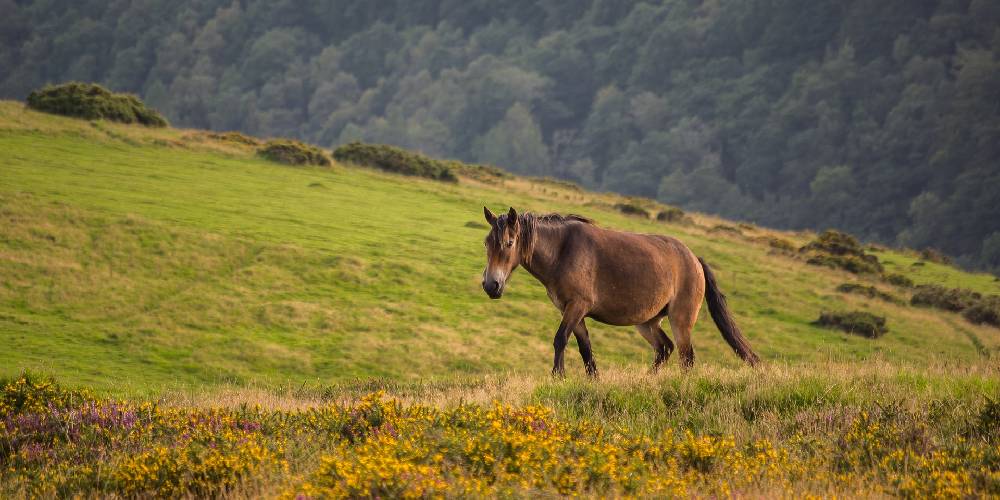
Exmoor ponies are, as you might imagine, are pretty small ponies. On average, the Exmoor will stand around 11.1 to 12.3 hands high. This is pretty small for a horse or pony which is why they are so popularly used with children. The Exmoor is kid-sized!
Exmoor ponies are small but stocky. On average these ponies weigh in between 800 and 900 pounds (365 to 410 kilograms).
What Colors Can Exmoor Ponies Come In?
There are many breeds that, like the Exmoor pony, only come in select few colors. The Exmoor can only come in two. The colors they can be include bay coat color which can range anywhere in shade from a black bay to a light bay, to the dun coat color which can range anywhere from sandy to grey in color.
One of the unique traits that this pony breed has is the fawn-colored muzzle. No matter the shade of coat that this pony has, they will always have a lighter colored muzzle.
The History Of The Exmoor Pony Breed
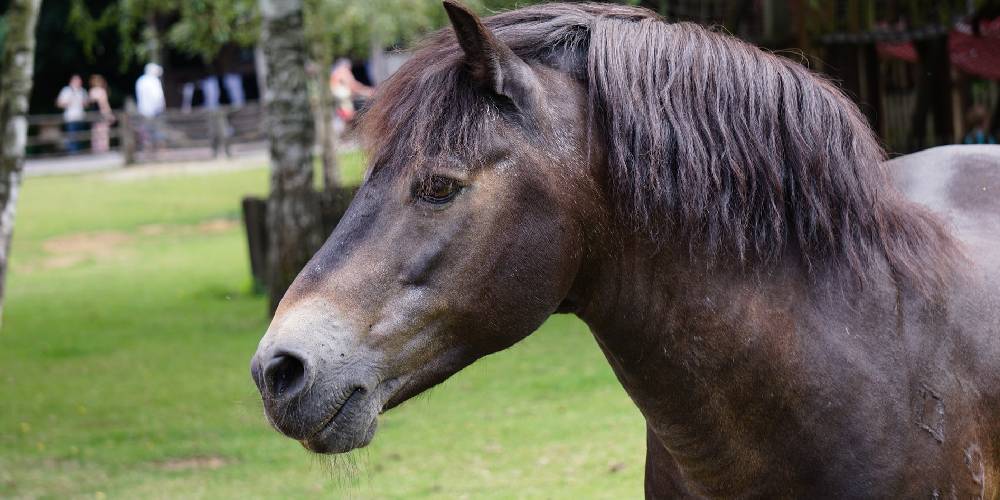
The Exmoor pony is a breed whose roots can be traced back hundreds of years. There are even prehistoric cave paintings of ponies that resemble the Exmoor.
This breed of pony has roamed over the moorlands of Devon, England for hundreds of years. These ponies have pretty mich looked the same as today’s Exmoor because of their limited exposure and isolation from other horses and potential cross breeding.
Because of the consistent exposure to the tough English winters, these ponies over time have adapted to the cold and will grow a thick double layered winter coat to protect themselves from the freezing temperatures.
Exmoor ponies are around half feral and half domesticated. There are great conservation efforts in place to preserve the numbers of these ponies. The reason for this is to keep the numbers of these ponies healthy.
How To Identify Exmoor Pony
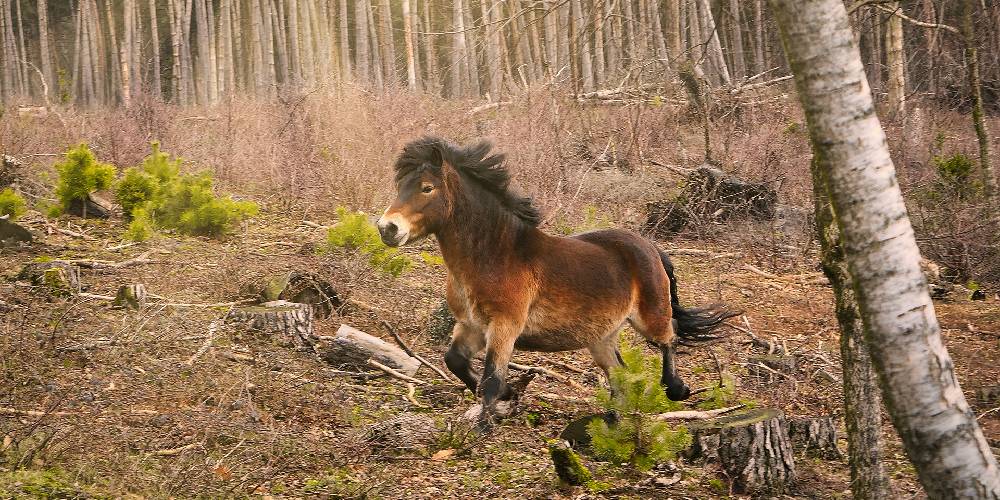
There are several traits that the Exmoor Pony carries that makes them able to be identified from other pony breeds. The traits these ponies carry include:
Coat
The coat of these ponies contains something completely unique to this breed that is unlike anything seen in any other breed.
In the winter, to protect themselves from the cold, the Exmoor pony grows itself a really thick winter coat. There are actually two different layers to this coat. The first layer, the inner layer, is really thick, wooly, and soft. This layer of the coat acts as a sort of insulation and it is responsible for keeping the horse’s body warm.
The second layer of this pony’s coat is the outer layer. Believe it por not, but this outer layer consists of greasy coarse hairs. These hairs act as a water repellant for the ponies which also helps to keep them warm.
Color
The Exmoor pony can only come in the bay and dun coat colors. This is another thing that makes these ponies able to be identified. If a pony contains all of the other traits of this breed and is of the dun or bay coat color, it is likely that they are in fact an Exmoor pony.
Eyes
This breed of pony has a unique trait about its eyes. The eyes of the Exmoor pony have a really heavy upper lid. This is a look known as the ‘toad eye’ and it is prevalent in almost all Exmoor ponies.
Not only do Exmoor Ponies have ‘toad eyes,’ they also have lighter colored hair around their eyes as well.
Tail
Like many pony breeds, Exmoor ponies were blessed with the thick hair gene. These ponies not only have an extremely healthy thick tail, but their tail also carries a strange but unique trait to it too. The Exmoor’s tail has a faln-like growth of bushy hair at the top of their tail that sticks out in all directions.
Black Points
Like other Dun and Bay horses, the Exmoor Pony carries black points across its body. Some of the places that black points can be seen include:
- The legs
- The tips of the ears
- The mouth
- Around the nostrils
What Is The Exmoor Pony Good At?
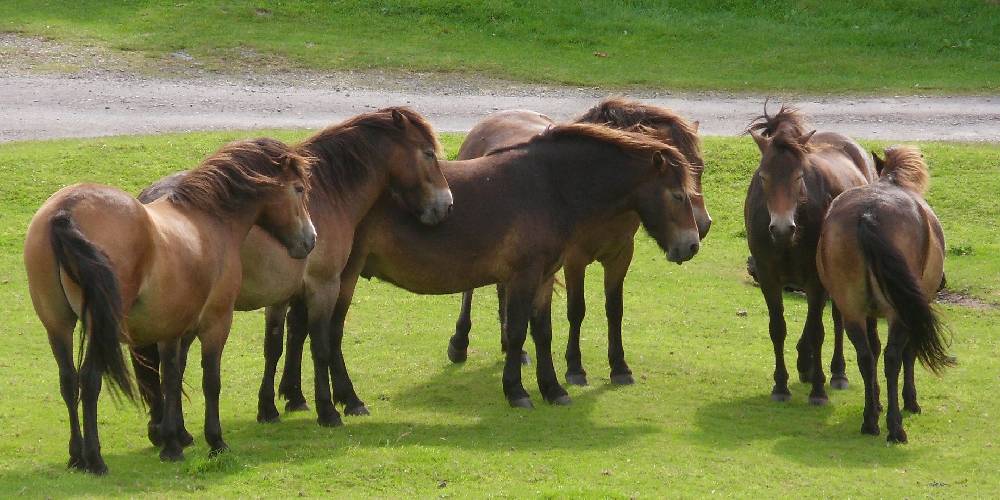
The Exmoor pony is a pony that can do a lot of things. The things that this pony is used for include:
- Riding lessons
- General riding
- Jumping
- Equitation
- Youth eventing
- Driving & pulling carts
What Is The Average Lifespan Of An Exmoor Pony?
The Exmoor, like most ponies, is a long-lived breed of pony that on average can live to be between 25 and 35 years old. Because these ponies have adapted to such hard conditions over the centuries, they are extremely hardy which is partially why they live to be so old.
Fun Facts On Exmoor Ponies
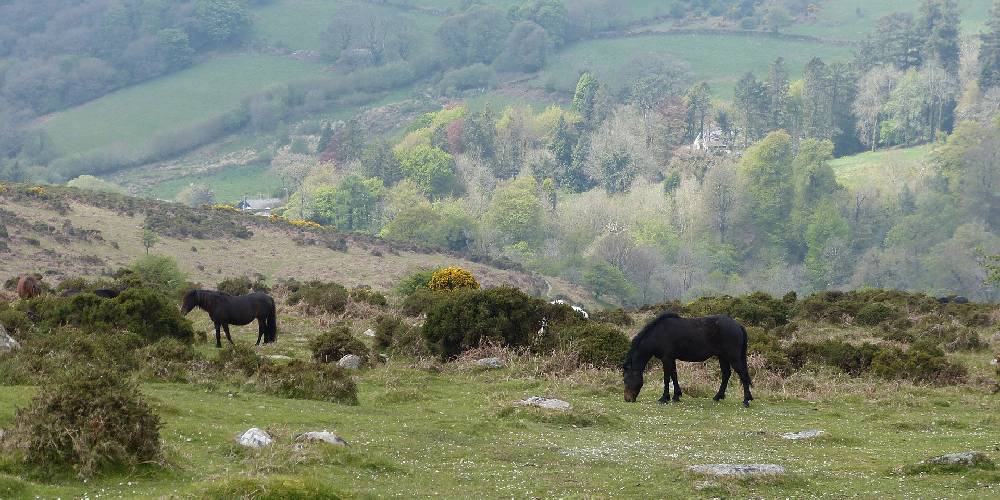
Male Exmoor Ponies thought not to carry good enough traits are gelded
Because the Exmoor Pony is currently under breeding and conservation efforts, only the best of the breed are bred to pass on stronger better genetics to the offspring. Because of this, colts and stallions thought to be below certain standards are gelded as to not pass on those certain genetics to future generations.
There is an annual Exmoor Pony roundup
There is an annual Exmoor pony roundup to check on the herd numbers, check on the health of the herd members, and mark the ponies to be able to identify each herd member.
This pony breed became extinct in the wild and is now under strict breeding controls
The Exmoor became extinct in the wild and was for a time only a domesticated pony breed. In order to bring back the numbers of this pony breed in both the domesticated and feral ponies, strict breeding and reproduction measures are taken to help preserve the breed and make it prosper.

